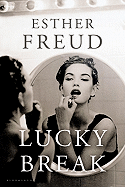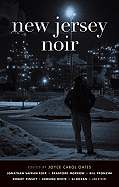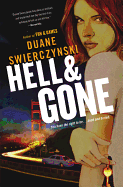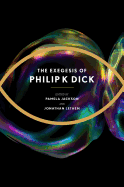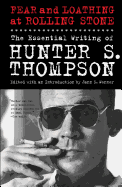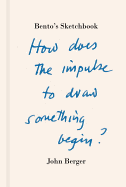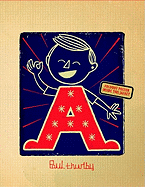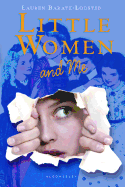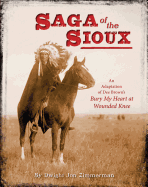This coming week is National Book Awards week, when the top books published last year in fiction, nonfiction, poetry and young people's literature are honored. There are readings, press conferences and other events; the grand finale comes Wednesday night, when the winners are announced and celebrated at a gala dinner in New York City. It's the book industry's Oscar night, and for the first time ever, it's being webcast live. 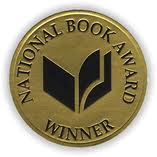 We've reviewed and covered in various ways some of the 20 NBA nominees--five in each category. There's a Book Brahmin with Téa Obreht, author of The Tiger's Wife, a fiction nominee. (She's a charming 26-year-old who has written an astounding first novel. An NBA award would be another milestone on the magical literary trip she has taken in the past several years.) We have reviews of The Swerve: How the World Became Modern by Stephen Greenblatt, a nonfiction nominee, and Chime by Franny Billingsley, nominated for the young people's literature award. In addition, we devoted a special issue to Okay for Now by Gary D. Schmidt, which includes a review and interviews with the author and his editor. Okay for Now is being considered for the young people's literature prize.
We've reviewed and covered in various ways some of the 20 NBA nominees--five in each category. There's a Book Brahmin with Téa Obreht, author of The Tiger's Wife, a fiction nominee. (She's a charming 26-year-old who has written an astounding first novel. An NBA award would be another milestone on the magical literary trip she has taken in the past several years.) We have reviews of The Swerve: How the World Became Modern by Stephen Greenblatt, a nonfiction nominee, and Chime by Franny Billingsley, nominated for the young people's literature award. In addition, we devoted a special issue to Okay for Now by Gary D. Schmidt, which includes a review and interviews with the author and his editor. Okay for Now is being considered for the young people's literature prize.
The events leading up to "NBA night" include: on Monday night the "5 Under 35," at which five fiction writers under age 35 will read; Tuesday afternoon's teen press conference--when students pepper the young people's award nominees with questions; and Tuesday evening's event, at which many of the finalists will read.
"NBA night" is also an occasion to honor several important people in the book world: this year, medals will be given to poet John Ashbery for his contributions to American letters and to Mitchell Kaplan, owner of Books & Books bookstores and co-founder of the Miami Book Fair International, for service to the literary community. The emcee on Wednesday night is actor, author, composer and singer John Lithgow.
There's always much debate about the merits of the nominated titles and omitted titles. Still, every year the list is full of reading gems, and this year's eclectic list is no exception.
Happy reading!
Lucky Break
by Esther Freud
Esther Freud (Hideous Kinky) is the daughter of Lucian Freud and great-granddaughter of Sigmund. In this novel, she draws on her early experience of studying to be an actress.
It is the first day at Drama Arts, and the first-year class is filled with trepidation, hope and holy zeal for the acting profession. The teacher says, "We want to do everything we can here to rid you of the desire to perform. We want you to learn to BE. To exist in your own world on the stage." Those words resonate with each of the class members.
Nell, a doughy girl who believes she is best suited to be cast as a maid, is the most likable and normal and, as it turns out, she has real talent. Beautiful Charlie, "with toffee-coloured skin and peroxide hair cropped short against her head," fights a constant battle to keep that skin perfect--so much so that she exaggerates the slightest blemish, rendering her unwilling to leave the house. Dan is ambition personified. He falls for Jemma on the first day; they eventually marry and have four kids. His goal is to play Hamlet, and, at book's end, it looks like it just might happen.
Each of the actors suffers the agony of the failed audition, waiting for the agent to call, not getting a gig, living from hand to mouth, working pizza jobs, temping--anything to allow them to keep chasing the golden chimera of success.
Nell wonders if there is any such thing as the "lucky break," and then, finally, she gets one. At the benefit opening for her film, she is in a receiving line awaiting Prince Charles and Camilla. Esther Freud knows all about this business; her writing is filled with insight, humor and an insider's view. On the night of the opening, Nell's producers present her with a "luxuriantly thick, white towelling dressing gown every hotel begs you not to steal." Nell reflects: "How odd, she thought, when I could finally afford to buy it, and she started to see how much easier it was to stay rich once you'd begun." --Valerie Ryan, Cannon Beach Book Company, Ore.
Discover: Drama Arts, a London acting school, is the setting for the stories of a cohort of actors.
New Jersey Noir
by Joyce Carol Oates, editor
Akashic's ambitiously geographical crime fiction series here tours the dark and sometimes quirky corners of the Garden State, leading off with Joyce Carol Oates's nostalgic examination of all things New Jersey, coupled to an enlightening exploration of the key elements of noir. Her promises of the betrayal and odd sense of morality typical of noir writing are not hollow, as the anthology's stories and poems will demonstrate.
Some contributors reference the state's history: Bradford Morrow's "The Enigma of Grover's Mill" tells the story of one family whose lives were forever changed after the mass panic following Orson Welles's War of the Worlds radio broadcast, while Barry N. Malzberg and Bill Pronzini reveal the final resting place of Jimmy Hoffa in "Meadowlands Spike" (albeit through the confession of a somewhat unreliable source). Among the other notable selections: Lou Manfredo's gritty and descriptive "Soul Anatomy," in which a police union lawyer helps a young cop--the son of a local politician--get his story straight after a fatal shooting in Camden, and Jonathan Santlofer's "Lola" shines as an oddly satisfying tale of love and betrayal, about an artist who meets his inspiration on the train to Hoboken and quickly becomes obsessed with her. Arranged in four parts and punctuated by the striking photography of Gerald Slota, New Jersey Noir is a distinctive, thoroughly entertaining addition to Akashic's series. --Sarah Borders, librarian, Houston Public Library
Discover: A lovingly collected assortment of tales and poems that range from the disturbing to the darkly humorous.
Mystery & Thriller
Hell & Gone
by Duane Swierczynski
Many authors use "hell" as a simile, but Duane Swierczynski is almost literally describing the setting in which most of Hell & Gone takes place, as ex-cop Charlie Hardie is kidnapped by the nefarious Accident People--killers who make their hits look like accidents--and sent deep underground to run a prison that supposedly holds the world's most dangerous criminals. Life is hell in a place with no windows or sunlight, but if anyone tries to escape, everybody dies. Things turn topsy-turvy when one of the prisoners says she didn't do anything wrong; she was looking for Charlie when she was abducted and brought here. The guards had warned Charlie about how this prisoner can mess with people's heads, so who--and what--should he believe?
As with the novel's predecessor, Fun & Games, the pace here is unrelenting, and though the story takes many bizarre turns, Swierczynski is inventive enough to keep readers from guessing where it's headed. Poor Charlie: he can never get a moment's respite from the craziness around him, caught in a situation whose purpose he still doesn't understand--much less his role in it. It's difficult to see "Unkillable Chuck" at the start of Hell & Gone, weakened by injuries he sustained during his first encounter with the Accident People and subjected to their mysterious medical procedures. He will get to strike back in the end, though, even if his actions don't achieve all the desired results. Still, Point & Shoot is yet to come--and if the cliffhanger is any indication, the finale to this trilogy promises to be out of this world. --Elyse Dinh-McCrilllis, freelance writer/editor, blogging at Pop Culture Nerd
Discover: Hell for Charlie Hardie, but fun for readers.
Biography & Memoir
The Exegesis of Philip K. Dick
by Philip K. Dick, edited by Pamela Jackson and Jonathan Lethem
In early 1974, science fiction author Philip K. Dick went through a series of hallucinatory experiences that he spent the next eight years of his life trying to understand. Some of his tentative answers appeared in subsequent novels, beginning with Valis (1981), but the real analysis was contained in the "Exegesis," thousands of pages of handwritten and typed notes. A small portion of this material was published in 1991; this new Exegesis is significantly larger, but still comprises only about one-tenth of the available content.
To the uninitiated, Dick's experiences in and of themselves may seem bizarre, and his theoretical frameworks for those experiences increasingly baroque. In the theory most fans have heard, Dick became convinced that the world of 1974 was a holographic illusion, that it was really 70 A.D., and that he had been contacted by either the Holy Spirit or Sophia, the Gnostic embodiment of divine wisdom, and alerted to the presence of an underground Christian movement dedicated to overthrowing the false world. The Exegesis has even weirder hypotheses; Dick frequently became enamored of whatever idea he'd most recently uncovered in his research and reconceptualized his entire experience around it.
Jackson and Lethem primarily serve as invisible guides through the Exegesis; they've made hard choices about what to include from the vast material. The most interesting commentary comes from the experts who've read through the material, including the philosopher Simon Critchley, religious historians Erik Davis and Jeffrey J. Kripal and the novelist Steve Erickson. These annotations help us to see the Exegesis as an assertion of creative identity. Why would some form of higher intelligence reach out to a struggling science fiction writer in Southern California in 1974? Because, as Erickson explains, Philip K. Dick, like any creative artist, needed to believe he mattered. --Ron Hogan, founder of Beatrice.com
Discover: The Exegesis lifts the hood on one of the 20th century's most visionary writers. At nearly 1,000 pages, it's not for dabblers, but it is intensely rewarding.
History
Lisbon: War in the Shadows of the City of Light, 1939-45
by Neill Lochery
During World War II, António de Oliveira Salazar had one overriding goal as Portugal's dictator: to maintain the neutrality of his small, poor, vulnerable nation. The deals, the compromises and the consequences come into clear view in Neill Lochery's lively, accessible and hair-raising history of a time and place that many have chosen to forget in order to save face.
Portugal was geopolitically well positioned to maintain its neutrality at the same time it did business with both sides: Germany wanted to continue buying supplies of wolfram (tungsten), and the Allies were counting on obtaining use of the Portuguese-controlled Azores for their sea and air purposes. Lisbon, located at the western edge of continental Europe, also was a stop for refugees fleeing the Nazis. All these factors made Lisbon, formerly sleepy and neglected, a hotbed of international intrigue as soon as the war began.
The tides of refugees that flowed through Lisbon have long captured most of the coverage from that period and included celebrities like Peggy Guggenheim, Max Ernst and Arthur Koestler--and even the Duke and Duchess of Windsor, who got special treatment. But Lisbon was also the scene of desperation as many Jewish refugees waited for exit papers to get them out of Europe. The sheer numbers of international travelers and the knowledge they might be carrying created work for the Portuguese secret police and a new local business: spying. "At times, it appeared that almost everyone in Lisbon was either a spy or pretending to be one," Lochery writes. The real money, however, was in the wolfram trade with Germany. Salazar's eventual demand that Germany pay for the wolfram in gold led to a network to camouflage the flow of payments that has soiled all involved (including Switzerland, Brazil and even the Shrine of Our Lady of Fatima). Nobody, it seems, escaped the taint of conducting business as usual in such times under the guise of neutrality. --John McFarland, author
Discover: A lively, accessible and hair-raising history revealing every sordid detail of Lisbon during World War II--a time and place that many have chosen to forget in order to save face.
Social Science
Grace Before Dying
by Lori Waselchuk, intro. by Lawrence N. Powell
The notorious Louisiana State Penitentiary (aka Angola, or "The Farm") has housed the state's worst criminals since the beginning of the 20th century. Documentary photographer Lori Waselchuk was allowed special access to the prison to photograph its successful hospice program in Grace Before Dying. Her black-and-white, close-up images capture the transformation of hardened, violent inmates into compassionate men who have given what's left of their imprisoned lives to caring for their dying cellmates.
Tulane history professor Laurence Powell's introduction provides a brief but comprehensive history of Louisiana's many abortive attempts at penal reform, when "conditions in Angola went from bad to somewhat better before plunging toward flat-out worse." His political narrative, however, can't convey the tragedy and pathos of this subject with the drama of Waselchuk's sensitive portraits. Her well-framed shots of rugged, healthy inmates gently washing the emaciated faces and fragile legs of the dying tell more than words ever can.
The inmates' hand-quilted funeral shrouds; the glaring prisoner pallbearers carrying the prison-made casket; a cement block hospice room with a sleeping patient, a fellow prisoner playing an omnichord and an armed guard in front of the steel door--all of Waselchuk's images make it clear we are all human, no matter how beat down, unlucky, violent, or doomed to "life without parole." --Bruce Jacobs, founding partner, Watermark Books & Cafe, Wichita, Kan.
Discover: Dramatic photographs capture the compassion of Louisiana State Penitentiary inmates tending to dying cellmates.
Shiny Objects: Why We Spend Money We Don't Have in Search of Happiness We Can't Buy
by James A. Roberts
The Beatles may have sold us on the notion that money can't buy us love, but what about happiness? In Shiny Objects, veteran marketer and professor of consumer behavior James A. Roberts pulls back the curtain on advertising, the American Dream and contemporary consumerism.
Two parts sociology and one part self-help, Shiny Objects contains a thorough review of the literature related to spending and happiness. Roberts calls attention to the deep contradiction between Americans' stated belief that material possessions cannot make us happy and the undeniable fact that we continue to buy as if they will. Additionally, numerous studies indicate that happiness is largely biologically determined--that we inherit it rather than acquire it--so though we may feel a boost in happiness immediately after a purchase, it is short-lived. We quickly adapt to the "new normal" and begin looking for the next acquisition and the next temporary bump. Roberts calls this the "treadmill of consumption," and he cites evidence that pursuit of material possessions (and the long hours of work and stress required to pay for them) is inversely related to well-being, self-acceptance, personal relationships, community involvement and other indicators of social, psychological and physical health. In fact, the primary difference between happy people and unhappy people is not income, homeownership or the number of gadgets owned, but social relationships. Roberts encourages readers to check their consumer behaviors and rededicate themselves to pursuing relationships and avocations that can lead to genuine happiness, and he provides quizzes, checklists and tools to help them do so.
Giving readers a wealth of information to parse, Roberts offers an intellectual approach to an emotionally charged subject and suggests concrete changes readers can effect to escape from materialism and build lives with real meaning. --Rebecca Joines Schinsky, blogger at The Book Lady's Blog
Discover: An intellectual approach to an emotionally charged subject--consumerism--with suggestions on how to escape materialism and build a life with real meaning.
Essays & Criticism
Fear and Loathing at Rolling Stone: The Essential Writing of Hunter S. Thompson
by Hunter S. Thompson; edited and with an intro. by Jann S. Wenner
Hunter S. Thompson wrote for Rolling Stone from 1970 until his last official "dispatch" shortly before his death in 2004. In those three and a half decades, he produced what Paul Scanlon, the magazine's managing editor in the 1970s, estimates to be a total of almost half a million words, about 250,000 of which appear in this collection. From Las Vegas and Watergate to Nixon's funeral, along with whatever events struck his macabre, capricious, drug-fueled fancy, Thompson invented a new style of journalism by reporting the facts as filtered through a surreal, finely tuned sense of the Kafkaesque.
Those familiar with Thompson only by reputation may be surprised to learn how gaspingly, nonstop, laugh-out-loud funny he is. "Fear and Loathing in Elko," to take one example, is a delirious freefall through the layers of Thompson's explosive mix of fact and paranoia, allegedly recounting a road trip with Clarence Thomas involving guns, drugs, "The Judge" taking Thompson's wallet and $20,000, a suicide, near-fatal escapes, Chinese sex dolls and spray cans of black paint applied to his "wanted" vehicle. Even a genteel luncheon with Bill Clinton on the 1992 campaign trail could inspire febrile headlines for Thompson's canted imagination: "Clinton Injured in Wild Brawl with Dope Fiends: Candidate Denies Drunkenness, Cancels Bus Trip, Flees."
Appealing to readers with an appreciation for the freakish, Fear and Loathing at Rolling Stone will also introduce Thompson to a new generation of readers who will discover they, too, are demented, die-hard fans. --Judith Hawkins-Tillirson, proprietress, Wyrdhoard Books, and blogger at Still Working for Books
Discover: The deranged and grotesque world of Hunter S. Thompson, lurking just beneath the surface of consensus reality.
Bento's Sketchbook
by John Berger
In a book that invokes the thought and spirit of the 17th-century Dutch philosopher Baruch Spinoza, artist, novelist, critic and activist John Berger (Ways of Seeing) offers an idiosyncratic glimpse at what inspires the human impulse to draw and uses that as a springboard to explore an array of artistic, cultural, political and personal subjects.
Sprinkled throughout the book's brief sketches are excerpts from Spinoza's writings, mostly his Ethics. Berger relates that the philosopher himself was known to carry a sketchbook that was never found when he died at age 44, and he tries to imagine what that book might have contained. To accompany his musings, Berger offers a generous selection of his own striking drawings.
But Berger presents more than abstract musings on art, philosophy or politics. There's a rollicking account of his encounter with a humorless security guard at London's National Gallery. He tells the moving story of a Cambodian refugee--an artist--he met while swimming laps at a pool in Paris and of the Japanese paintbrush he gave her that she used to render an elegant painting on rice paper of a bird perched on a bamboo stem. And he offers the poignant story of Luca, a French aircraft mechanic whose post-retirement dreams of taking his wife to all the destinations he visited during his career are shattered by her dementia.
Characteristically, Berger steers away from direct answers to the mystery of the artistic impulse or the many other questions he poses in this short book. "We who draw do so not only to make something visible to others," he writes, "but also to accompany something invisible to its incalculable destination." But the value of this impressionistic work lies less in those answers than it does in exposing us to new ways of encountering the world. --Harvey Freedenberg, attorney and freelance reviewer
Discover: John Berger invokes the spirit of Spinoza as he tries to open our eyes to new ways of looking at the world.
Travel Literature
Crazy River: Exploration and Folly in East Africa
by Richard Grant
If you prefer your travel memoirs vividly reportorial but coy about the author's personal tribulations, Richard Grant's Crazy River: Exploration and Folly in East Africa is the vicarious safari for you. Grant does a superlative job of blending hardcore adventure tourism with an unsentimental yet empathetic analysis of local culture and conflict.
The real-life characters of Crazy River include Milan, a South African golf pro doomed to trawl the bars and beaches of Zanzibar until his 18 holes get built; Ryan Shallom, a hunting guide in Tanzania to rich Texans who is as savvy about corrupt game wardens as the feeding habits of grumpy hippos; and Patrice Faye, a French philanthropist-naturalist-playwright who named his school for orphans "Castel Croc" in honor of his crush on Burundi's legendary man-eating bull crocodile. You'll learn a lot about them, but little about Grant other than that he has a yen for travel, an explorer's tolerance for prolonged discomfort, a woman and a dog back home in Arizona and a Ulysses-like resistance to the aggressive sirens who swarm every time a cash-carrying muzungu (the Swahili term for white people, literally meaning "those who wander around lost in an annoying way") enters a bar.
Grant is on a quest to make the first descent of Tanzania's Malagarasi River from its uncharted headwaters to Lake Tanganyika, an endeavor he contrasts with earlier "deranged" expeditions in the same region by 19th-century English explorers Burton and Speke. Grant describes his central river adventure in plenty of sweaty detail and surrounds it with thoughtful reportage on East Africa's challenges with foreign aid graft, entrenched superstition, malnourishment, cattle encroachment, wildlife poaching and post-colonial malaise. He concludes his three-month journey with a view of Rwanda's post-genocide "reconciliation" that is both hopeful and terrifying. Whether on land or water, Grant's panoramic gaze gives his memoir a relevancy that exceeds one man's experiences on a crazy river. --Holloway McCandless, blogger at Litagogo: A Guide to Free Literary Podcasts
Discover: A modern explorer's intense account of the people, politics, wildlife and waterscapes of East Africa.
Children's & Young Adult
Paul Thurlby's Alphabet
by Paul Thurlby, illus. by Paul Thurlby
British graphic designer Paul Thurlby plays with type in the most delightful ways. He builds his compositions on the capital letter that correlates to his subject on the right-hand page. On the left-hand page, both the capital and lower-case letters appear against a bold, solid-colored backdrop--ideal for children just learning the alphabet.
But those who have mastered their ABCs will most appreciate these witty illustrations. "Q for Quicksand," for instance, stars a red egg-shaped fellow with arms outstretched in fear, and one leg already submerged--for a perfect Q shape. "A for Awesome," which creates a portrait of the energetic boy on the book's cover, uses red, turquoise and navy on a sand-colored background. Two letters later, in front of a mesh net, only the goalie's arms form the "C" to "Catch" the soccer ball. Here, Thurlby incorporates the light blue that dominated the picture for "B." He also introduces a gold background hue that matches the color of the bone in the "D for Dog" spread. The artist subtly carries his color scheme through the compositions, and his precisely placed lines also create a sense of movement.
Thurlby offers a wide variety of visual approaches. "G 4 Graffiti" breaks with the usual pattern ("4" in lieu of "for"), and he forms the type for "K is for Karate" (a boy's K-shaped karate stance) with the swish of a brushstroke that resembles Chinese calligraphy. Children may pick up this whimsical volume to learn their letters, but they'll also come away with a heightened aesthetic sense. --Jennifer M. Brown, children's editor, Shelf Awareness
Discover: A graphic designer's unique and playful interpretation of the alphabet using a spectrum of color, texture and type.
Little Women and Me
by Lauren Baratz-Logsted
If you had the power to change something crucial in the plot of Little Women, what would it be? Keep Beth from dying? Or amend "the most frustrating romantic outcome in any book ever," as narrator Emily puts it, and have Jo marry Laurie?
When Emily's high school freshman English teacher tells the class to pick a book they love and change one thing, the assignment sounds like a snap. Except that, as Emily looks though her much-read copy of Little Women, somehow she finds herself in it. In the story, in the Marches' living room, in the family of sisters Meg, Jo, Beth and Amy--and in the 1800s with no indoor plumbing. But some things don't change. Just as it is in her own family, Emily is the forgotten middle March sister, struggling to stand out and get her fair share. Now that she is ensconced in the book, Emily finds she doesn't want Laurie to be swept up by Amy or Jo. No, she decides she wants him for herself!
Fans of Little Women will have great fun reliving the story through the eyes of Emily, a modern teen in an old-fashioned world. They will also enjoy Baratz-Logsted's (the Sisters 8 series) fresh take on time-honored scenes. Emily learns a lot during her time with her fictional family, including how to love and respect her sisters and, more importantly, herself.
This book is not for the uninitiated, but for devotees of Alcott's story, it's a satisfying romp through the beloved classic. --Lynn Becker, host of the monthly online discussion of children's books for SCBWI, Book Talk
Discover: A fun way to revisit a favorite book, the classic Little Women.
Saga of the Sioux: An Adaptation of Dee Brown's Bury My Heart at Wounded Knee
by Dwight Jon Zimmerman
This year marks the 40th anniversary of Dee Brown's Bury My Heart at Wounded Knee, the landmark history of Native American people told from their own perspective, with extensive primary source material. Military history expert Dwight Jon Zimmerman (Uncommon Valor) is ideally suited to adapt this classic for a younger audience, having previously done so for Simon Winchester's Krakatoa.
Zimmerman limits his account to the Sioux Nation, which allows him to maintain the depth of the original without overwhelming his audience. This choice also allows him to stick with familiar figures and battles (e.g., Crazy Horse, Sitting Bull, Little Bighorn). Zimmerman begins with an introduction that orients young readers to late 19th-century Native American life. Then he leaps right into the 30-year war that began in 1863 in Minnesota. Each chapter proceeds through the most important battles, treaty negotiations and betrayals leading to 1890 and the final defeat at Wounded Knee. Zimmerman hits his stride with the Fetterman Massacre, and the material from this point to the end provides a particularly engaging, suspenseful and, of course, infuriating chronicle of the events. The pattern of broken promises and poor treatment of the Sioux people will make an impression on readers, although this account will be most enjoyed by those with a strong interest in battle and strategy. Nearly every other page includes a black-and-white map, a photograph or other illustration, always with a detailed caption. Unlike Brown's book, this one provides no source notes, though direct quotes are attributed within the text. The volume ends with a glossary, timeline, recommended reading, suggested websites and index.—Angela Carstensen, high school librarian and blogger
Discover: The tragic history of the Sioux Nation, made accessible to young readers in this adaptation of Dee Brown's classic work, Bury My Heart at Wounded Knee.



